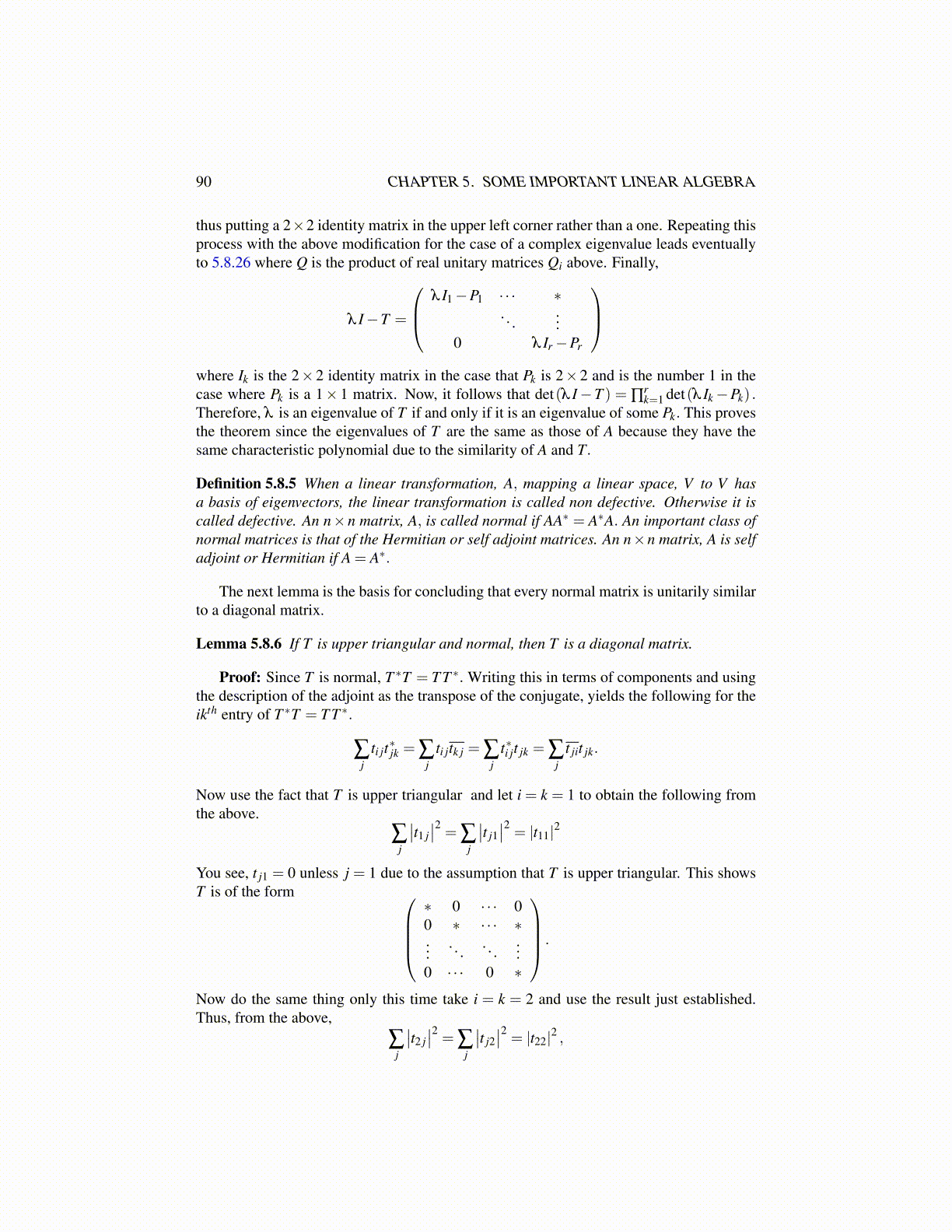
90 CHAPTER 5. SOME IMPORTANT LINEAR ALGEBRA
thus putting a 2×2 identity matrix in the upper left corner rather than a one. Repeating thisprocess with the above modification for the case of a complex eigenvalue leads eventuallyto 5.8.26 where Q is the product of real unitary matrices Qi above. Finally,
λ I−T =
λ I1−P1 · · · ∗. . .
...0 λ Ir−Pr
where Ik is the 2×2 identity matrix in the case that Pk is 2×2 and is the number 1 in thecase where Pk is a 1× 1 matrix. Now, it follows that det(λ I−T ) = ∏
rk=1 det(λ Ik−Pk) .
Therefore, λ is an eigenvalue of T if and only if it is an eigenvalue of some Pk. This provesthe theorem since the eigenvalues of T are the same as those of A because they have thesame characteristic polynomial due to the similarity of A and T.
Definition 5.8.5 When a linear transformation, A, mapping a linear space, V to V hasa basis of eigenvectors, the linear transformation is called non defective. Otherwise it iscalled defective. An n×n matrix, A, is called normal if AA∗ = A∗A. An important class ofnormal matrices is that of the Hermitian or self adjoint matrices. An n×n matrix, A is selfadjoint or Hermitian if A = A∗.
The next lemma is the basis for concluding that every normal matrix is unitarily similarto a diagonal matrix.
Lemma 5.8.6 If T is upper triangular and normal, then T is a diagonal matrix.
Proof: Since T is normal, T ∗T = T T ∗. Writing this in terms of components and usingthe description of the adjoint as the transpose of the conjugate, yields the following for theikth entry of T ∗T = T T ∗.
∑j
ti jt∗jk = ∑j
ti jtk j = ∑j
t∗i jt jk = ∑j
t jit jk.
Now use the fact that T is upper triangular and let i = k = 1 to obtain the following fromthe above.
∑j
∣∣t1 j∣∣2 = ∑
j
∣∣t j1∣∣2 = |t11|2
You see, t j1 = 0 unless j = 1 due to the assumption that T is upper triangular. This showsT is of the form
∗ 0 · · · 00 ∗ · · · ∗...
. . . . . ....
0 · · · 0 ∗
.
Now do the same thing only this time take i = k = 2 and use the result just established.Thus, from the above,
∑j
∣∣t2 j∣∣2 = ∑
j
∣∣t j2∣∣2 = |t22|2 ,